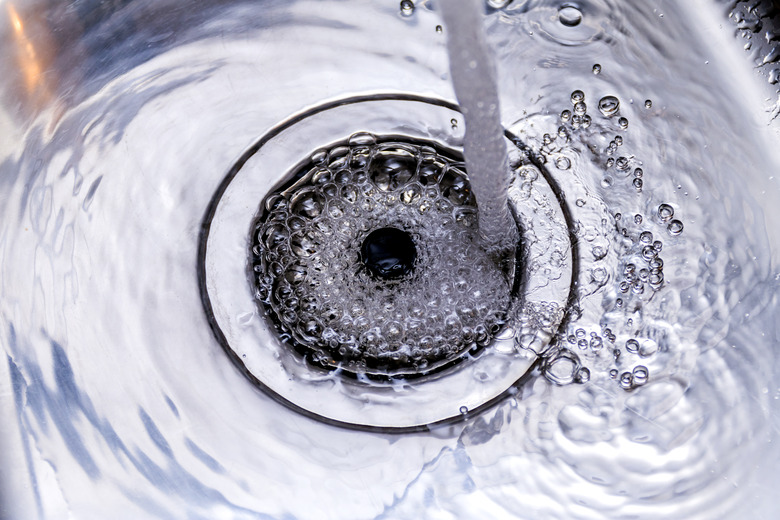How To Kill Mold In A Sink Drain And Keep It Clean
Mold and mildew spores are virtually everywhere, but they grow only when conditions are favorable, and they are right at home inside your kitchen drain. You may not be able to see mold in sink drains, or you may be able to catch a glimpse of black slime in sink drains by using a flashlight. Even if you can't see it, you can recognize mold by detecting a musty odor, and the result could be respiratory problems and allergic reactions. Killing mold in sink drains and keeping it away isn't difficult, even if you have a garbage disposal,
Removing Mold in Sink Drain
Removing Mold in Sink Drain
Mold collects in the drain tailpiece, which is the vertical pipe that extends down to the P-trap, and on the undersides of the strainer and stopper. The best way to remove it is to physically scrub it with detergent and water, so if you can, remove the strainer and stopper to gain access to the tailpiece. Scrub both the strainer and stopper with dish soap and water, then pour dish soap on a bottle brush and use it to scrub the inside of the tailpiece.
If you can't remove the strainer, you can access the tailpiece by disconnecting the P-trap. Although mold can't grow in the water inside the trap, it doesn't hurt to scrub out the trap while you have it off.
Natural Cleaning Alternatives
Natural Cleaning Alternatives
You may not want to remove the strainer or disassemble the P-trap, or you may want to kill the mold in shower drains where you can't access the pipes. In that case, the next best option is to use chemicals to clean the drain. Vinegar and baking soda combine to make a potent foaming drain cleaner that disinfects and deodorizes at the same time.
Pour 1/2 cup of baking soda in the drain and follow this with 1/2 cup of vinegar, then cover the drain for about 10 minutes to confine the foam to the pipe. Rinse with a gallon of hot water to which you've added 1/2 cup of salt. The water can be boiling hot if you have metal pipes; if they are plastic, use hot tap water to avoid damaging them.
Keeping the Drain Clean
Keeping the Drain Clean
Regularly treating the drain with a vinegar/baking soda "volcano" is a good way to keep it clean; for maintenance, reduce the portions of each ingredient by half. You can make a similarly effective mold-killing cleaner by combining borax, vinegar and hydrogen peroxide, which will also foam when you add water.
Baking soda kills mold and deodorizes all by itself; simply sprinkle it in the drain, leave it for an hour or two and flush with hot water. Enzyme-based drain cleaners kill mold safely, but they usually disappear down the drain before they have a chance to work.
Cleaning the Garbage Disposal
Cleaning the Garbage Disposal
Mold can be a particularly pernicious problem in a garbage disposal, where it feeds on the constant influx of food waste. Regular maintenance of your garbage disposal should include stopping the sink, filling it with soapy water and running the disposal while it drains. This treatment helps control mold, especially if you combine it with other simple measures, such as throwing one or two chopped-up lemons in the disposal once or twice a week.
To handle a well-established mold colony, fill the disposal with ice, pour in 1/2 cup of vinegar, turn on the cold water and run the disposal until all the ice is gone. Adding 1/2 cup of kosher salt helps disinfect, and it keeps the disposal blades sharp.
